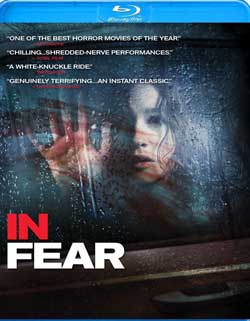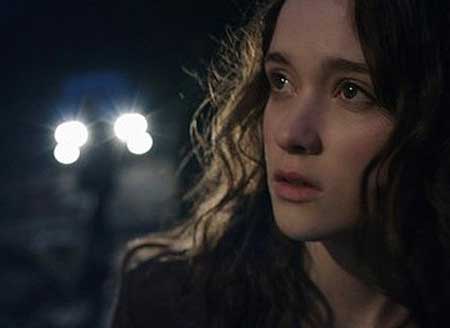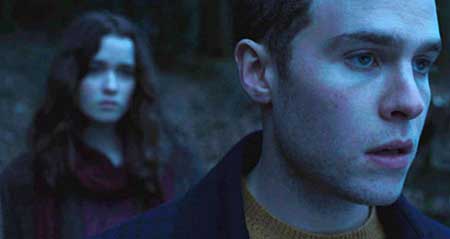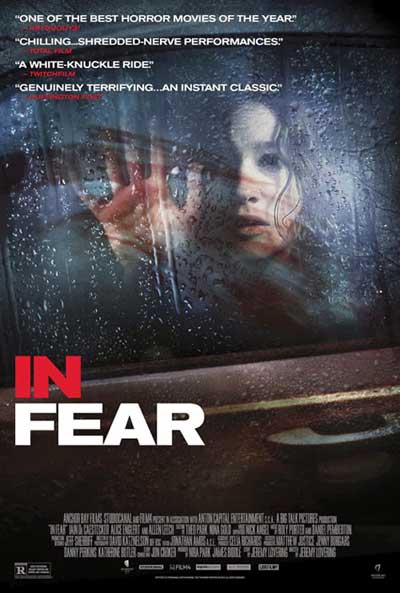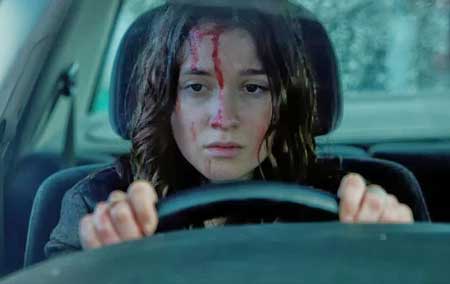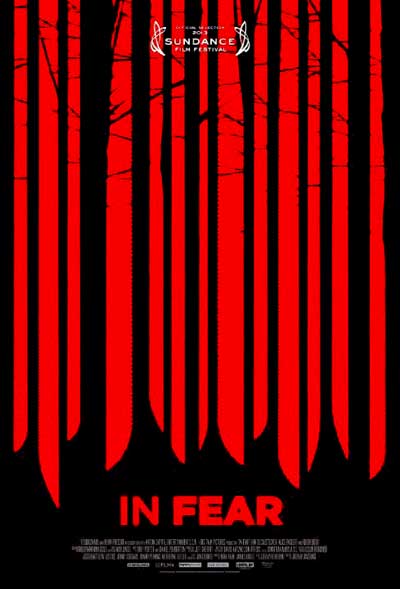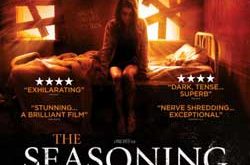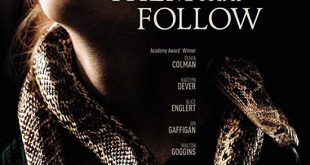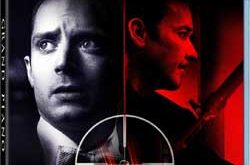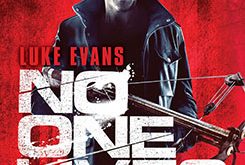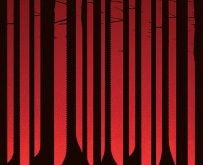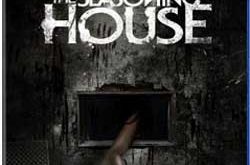Trapped in a maze of country roads with only their vehicle for protection, Tom and Lucy are terrorized by an unseen tormentor exploiting their worst fears. Eventually they realize they’ve let the evil in – it’s sitting in their car
REVIEW:
Fear. It is at the heart of all horror movies and was the theme that inspired Jeremy Lovering to create this film. He wanted to ask the question ‘does fear inevitably lead to violence?’ He actually described his creation as a social experiment to see if he could bring the ideas he wanted to reflect on to life.
My favourite thing about the film In Fear is the sense of mystery throughout – from the time that I first watched the trailer, there was something elusive about what exactly the ‘antagonist’ of this story was that had me intrigued. I think it is always admirable when a horror movie does not succumb to the easy route of blood and gore to elicit a shock from the audience, and In Fear can definitely be commended for this. There are a lot of great, unnerving locations that help to create the suspense, although mostly ‘empty’ space is used. Almost like the director is daring us to stare into the darkness ourselves, seeing if our own imagination will start to get the better of us, much like the characters in his film.
On one hand, In Fear is actually really simple. Lucy and Tom get a bit flirty one night, so he invites her to a music festival. On the way there, Tom suggests staying at a hotel the first night as there aren’t any bands playing and, naturally, they should celebrate their two week anniversary. Lucy reluctantly agrees but as the two drive further and further into the isolated, uneasy Irish countryside, they get more and more lost and day soon turns to night. Their already shaky newborn relationship is strained even further when it seems like they are being watched, or hunted even. By what though? Something/someone behind the darkness? Nature itself? Or perhaps just some twisted locals?
It is these last questions which torment both the viewers and the characters throughout the entire duration of the film, with the focus being on the tension and atmosphere rather than giving away any of the secrets. Director Jeremy Lovering has talked extensively in many interviews that I’ve read about his intentions behind In Fear, and his explanations definitely add a new layer to the piece that I didn’t fully appreciate until after reading. He describes about how he shot the film without giving the actors a script or even telling them the story, meaning that they didn’t know what was going to happen from one scene to the next. Because of this, during the editing process, Jeremy Lovering would only use the first take for any of the fear reactions because they would be the most genuine. Indeed, stars Alice Englert and Iain De Caestecker gave in spectacular performances, though this is probably because they weren’t even acting half of the time! They were kept in a state of genuine fear, anticipation and unease, but I’m sure it was all worth it – their emotions definitely transfer into the audience to make them feel just as afraid…just what you want in a horror movie, really.
Similarly, In Fear also works on a different level where it can be looked at as an entire relationship being compressed into a single night. They have the initial awkward stage, then the happy, lovesick stage, which is when the obstacles start occurring. This creates tension between Lucy and Tom, causing some dramatic moments in the film where they have to come to terms with the fact that they don’t know if they can fully trust each other. Obviously, the obstacles featured in In Fear are more metaphorical in this context, but I think it is a clever way of adding a hidden depth to a horror movie. It defies the stereotype that all horror movies are mindless, misogynistic and violent for the sake of violence.
I think what also impressed me about this low budget film was how well it was shot, especially when you take into account the limitations they had with shooting entirely at night and mostly inside a car. Jeremy Lovering used Spielberg’s film Duel for inspiration about how to work with such a tight space. He noticed that the same camera angle was never used twice, and so this meant that it didn’t feel like the viewer was ‘stuck’. Therefore this was a principle that he employed for In Fear, and I think that his bold camera work really worked well for what he was trying to achieve. Even the fact that there were only three characters in the entire movie is quite astonishing because it is very difficult to get a story so intense with so few ‘props’.
Despite others saying that it is the ending that really ‘gets under the skin’ and ‘lingers on your mind afterwards’, for me I thought that the earlier parts of the film were better than the ending. After all of the build up, my expectations had risen too high to really be significantly fulfilled. The last few sequences in particular even felt a tad rushed and incongruent with the style of the rest of it. But it is definitely worth watching just for the decent scares at the start/middle of the film, and that feeling of being completely gripped to what you are watching, wanting answers and knowing that they’re just beyond your fingertips.
To finish off, I think it would be most suitable to insert a quote from the director himself who accurately describes what to expect from In Fear. ‘There is a lot of suspense, unknown threat from the dark, a lot of driving around getting lost, some tears, a few smiles, an act of betrayal, an act of violence, a tiny slice of hope, home invasion in a car and a messed up logic that results in murder-by-proxy.’ What more could you need in a horror film?
In Fear is now available on Bluray per Anchor Bay Entertainment
 Horror News | HNN Official Site | Horror Movies,Trailers, Reviews
Horror News | HNN Official Site | Horror Movies,Trailers, Reviews
